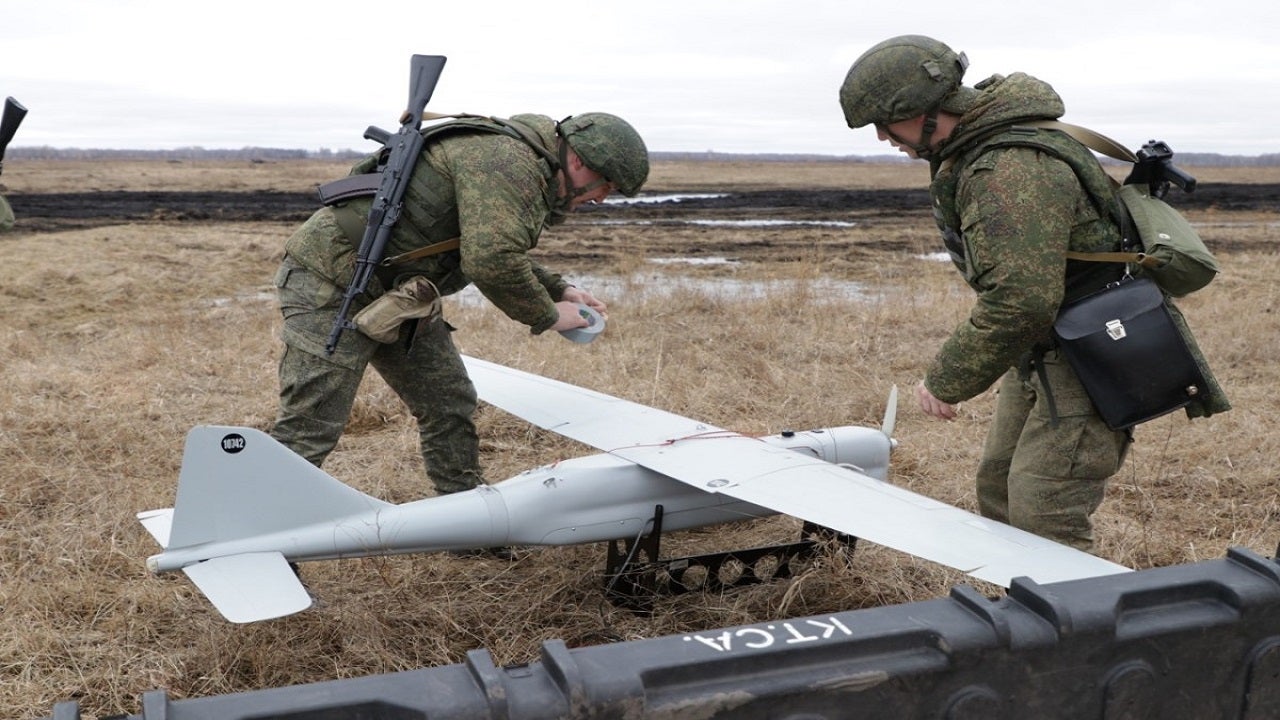In the last few weeks, the Russian Ministry of Defense released a slew of footage taken by drones, demonstrating their devastating impact on Ukrainian forces. However, if some reports are to be believed, it appears that Putin’s forces are allegedly encountering a few technical hurdles, as claimed by a new video of a captured drone that shows it is equipped with a low-end Canon DSLR camera.
The Ukrainian defense ministry posted a video of a soldier dismantling a Russian military surveillance drone, alleging that the drone had several unsophisticated features. In a video released to Twitter on Sunday, a soldier can be seen dismantling what the ministry claims are an Orlan-10 drone that crashed on Ukrainian soil.
The soldier is first seen in the video pointing out that the drone’s camera is a standard portable Canon DSLR with the main navigation button taped down to prevent it from unintentionally switching modes. The soldier then explains that the camera was fixed in place by a strip of adhesive tape.
The soldier goes on to say that the fuel tank cap on the drone is believed to be fabricated from the top and lid of a plastic water bottle. The drone was also wrapped in duct tape in several spots, according to the clip.
“This is seriously real. Not fake,” the soldier is heard saying, and joking: “We even thought of sending this ‘cosmic’ technology to our Western partners.”
The Orlan-10 reportedly costs between five and seven million rubles ($87,000 to $120,000) per unit. The Orlan-10 typically carries a thermovision camera, photo camera, video camera, radio transmitter, and retransmitter.
Nonetheless, the drone in the video appears to be in decent condition, but Kyiv has provided no details on how they were able to capture an intact drone with minimal damage.

Since Russia’s invasion began on February 24, Ukraine has stated that it has shot down several Russian Orlan-10 drones. On April 8, Ukraine’s 24th brigade shared a photo of an Orlan drone with a section of a water bottle as its primary fuel storage unit on Facebook.
If Ukraine’s claims are correct, such improvisation reveals a weakness in Russian technology. However, it also displays a desire for simple, practical solutions that make the greatest possible use of current commercial technology, such as a sturdy DSLR camera.
As previously reported by EurAsian Times, both sides are also using commercial DJI drones, indicating that consumer devices can do the task inexpensively and efficiently.
Orlan-10 Drone
The Orlan-10 went into service in 2010 and in 2020 it received a major upgrade that included a laser designator. It’s worth mentioning that the drone’s payloads can be modified to accommodate new gadgets.
The Orlan-10 is a small aircraft with a ten-foot wingspan that can fly at a leisurely 80 mph for up to 18 hours.
Even though the Orlan-10 is reportedly made entirely in Russia. Ukraine seized one in 2016 and alleged that many of the technology in the drone’s communications and navigation system were acquired from American companies. The rest of the parts came from China. Russian soldiers have employed this drone extensively in Ukraine.
The Russian Ministry of Defense published a series of videos showing an unseen projectile striking Ukrainian forces’ assets. This unseen projectile is most likely a Krasnopol laser-guided artillery shell, which was directed by the drone shooting the video. In Ukraine, Russia has only used a few laser-guided bombs, but the Krasnopol looks to be routinely utilized.

From antique D-30 towed howitzers to the latest 2S19 self-propelled cannon, Russia possesses plenty of 152mm heavy artillery capable of launching the Krasnopol. The original Krasnopol weighs 110 pounds and has a reported range of 20 kilometers, while improved versions are said to be able to kill objects at a range of 43 kilometers with 95% accuracy.
The 14-pound warhead is said to be able to knock out even large tanks by arriving at a steep angle and blasting through weak top armor.
According to Forbes, Krasnopol’s success can be attributed to the fact that it is coupled with a drone. The drone that took these videos is most probably an Orlan-10, according to experts. The argument stems from the fact that Orlan-10s were frequently assigned to artillery units in Russia.
The range of laser designators is limited to a few kilometers later-guided Russian, and observers on the ground are unable to locate targets such as enemy artillery behind the lines. Drones can fly around freely, and their bird’s eye vision makes it easy for them to spot automobiles, particularly when their tracks leave tell-tale lines of ruffled ground in open fields.
However, Ukraine also has similar laser-guided artillery munitions technology, and recent videos show that guided rounds are destroying Russian armor at long range.
Since no one has mentioned this so far:
Ukraine's artillery is using the 152 mm semi-active laser guided ??????? artillery ammunition to hit these russian vehicles.pic.twitter.com/ZQVHNec76i
— Thomas C. Theiner (@noclador) April 1, 2022
As the battle drags on, the Russian military will undoubtedly encounter numerous technological and logistical challenges due to a shortage of various military components. This is mostly due to the sanctions imposed on Russia by the United States and its allies.
Ukraine, on the other hand, will continue to get armaments and weaponry from the West, leading to more challenges for Russian forces.
- Contact the author at ashishmichel@gmail.com
- Follow EurAsian Times on Google News




